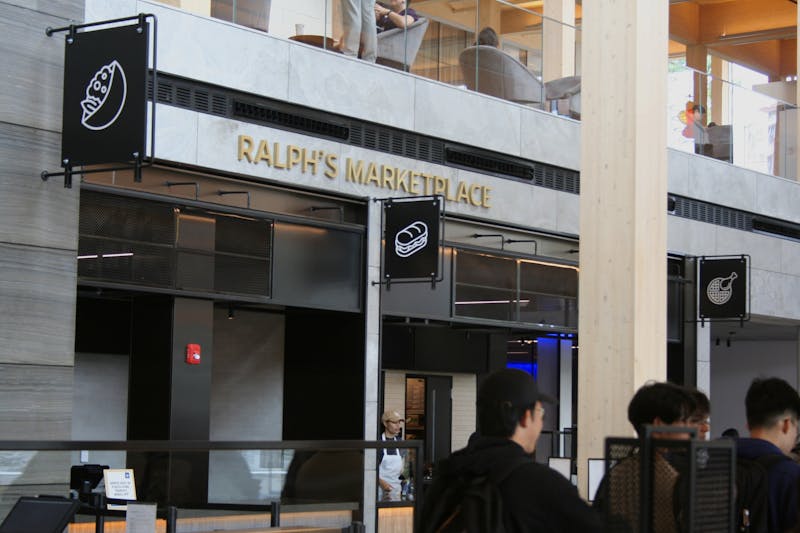The grand opening of the dining options at the Bloomberg Student Center on October 6, 2025, introduced several new food choices, including Koshary Corner, Connie’s Chicken and Waffles, Tim Ma Hospitality, and Urban Oyster. This milestone has prompted discussions about accessibility and affordability, impacting student life and community dynamics at Johns Hopkins University.
Grand Opening Celebrations
The celebration of the Bloomberg Student Center took place on October 16, 2025, with numerous donors attending to mark its completion. A lively performance from the Hopkins Pep Band and musicians from Peabody set the tone for the event, which included remarks from University President Ronald J. Daniels. He highlighted the Student Center’s long history, dating back to its conception in 1884.
In the official press release, the University described the building as a vital hub for student engagement, designed to foster connections among community members from diverse backgrounds. “The new facility will serve as a new hub for campus life, connecting members of the Hopkins community to one another from across different campuses,” the release stated.
Michael Bloomberg, a notable alumnus, also spoke during the ceremony, reflecting on his connection to the University and emphasizing the importance of supporting students regardless of their financial background. “When I graduated, I sent the University a check for five dollars. It was not much, but I recognized I owed something to Hopkins,” he shared.
The focus soon shifted to how students are interacting with the new facilities. Senior Tanti Felli discussed the significance of student leadership and representation in the athletic community, noting efforts to engage with the Student Life Committee.
Student Reactions and Engagement
The News-Letter surveyed students to assess their perceptions of the Student Center following the dining options’ introduction. Students rated the atmosphere an average of 7.67 out of 10, reflecting a positive shift compared to the previous average. They noted an improvement in their ability to socialize, with an average score of 7.13.
Senior Grace Aboagye observed that the dining options have fostered a more social environment. “People have become more social as they go downstairs, because they have to use the mobile app to order,” she noted. This interaction allows students to converse while waiting for their food, enhancing the communal atmosphere.
Sophomore Suryan Plenz echoed Aboagye’s sentiment, describing the Student Center as livelier than before. “Before, the Stuce was just a big building with places to study; now it has a small food court,” he explained.
Despite the initial enthusiasm, survey data revealed that a notable portion of students, approximately 36.7%, reported never using the food options. Only 3.3% of respondents dined at the center four to six days a week. Generally, students rated the food quality at an average of 6.9, indicating that while the new offerings provided variety, many felt improvements were necessary.
While some students found the food satisfactory, others raised concerns about pricing. The survey indicated that 80% of students considered the food options expensive. With prices for items like rice bowls ranging from $12 to $14, many students expressed difficulties in budgeting for regular meals.
Anonymous feedback highlighted the challenge of affording meals, with comments about the limited portion sizes. “We are students at the end of the day,” one response stated, reflecting a widespread sentiment about the financial strain of dining options.
Accessibility for diverse dietary needs emerged as another significant concern. Freshman Dhruva Lahoti, who follows a vegetarian diet, pointed out the limited options available. “They have a lot more options, but as a freshman, I don’t have as many dining dollars, so I wouldn’t be able to eat there consistently,” he said.
Many students echoed Lahoti’s frustration, noting that while the dining scene has diversified, it has not necessarily improved accessibility for those with dietary restrictions. One anonymous responder emphasized the lack of halal options, stating that only one halal choice was available among the vendors.
“Johns Hopkins should have taken the initiative to talk to them about this,” the student remarked, emphasizing the importance of dietary inclusivity.
Concerns also arose regarding the mobile ordering system and its limitations for students with food allergies. One student noted the absence of a feature to leave specific dietary requests, which could lead to cross-contamination issues.
Overall, while the dining options at the Bloomberg Student Center have sparked enthusiasm and a sense of community, significant challenges regarding affordability and accessibility remain. As students continue to navigate these new offerings, their feedback will be crucial in shaping the future of on-campus dining at Johns Hopkins University.







